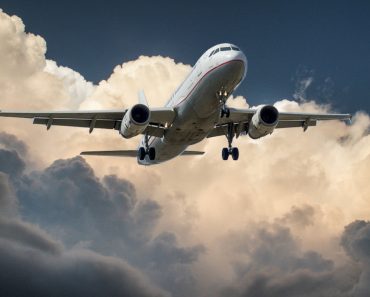Table of Contents (click to expand)
Some airports have unusually long runways because of the challenges that come with taking off and landing in hot and high conditions. Hot and high refers to a high ambient temperature and high elevation, which can impact the flight of airplanes. Longer runways give airplanes more energy for the subsequent climb into the sky.
After our airplane touched down on the runway the other day, I had a rather unusual feeling; I felt as if the airplane was running for too long on the runway. At first, I discarded the thought, but later on, I came to know that the runway was unusually longer than regular runways!
Upon further investigation, I realized that the particular airport I took off from was ‘hot and high’. After brushing aside the literal meaning of the phrase, I stumbled upon what is probably one of the smartest tweaks that humans have made to the aviation industry.
Recommended Video for you:
What Is ‘Hot And High’ In The Aviation Industry?

‘Hot and high’ is a phrase often used in the aviation industry, and it’s used to refer to the condition of high ambient temperature, as well as high elevation of the airport. Such conditions impact the flight of airplanes, and hence become a serious cause of concern, as they significantly influence the safety of the airplanes flying in such regions.
Let’s break down the term ‘hot and high’. ‘Hot’ is pretty intuitive; it is representative of a high ambient temperature of the region. Since temperature is a variable physical quantity (i.e., its value changes continuously), the severity of the ‘hot and high’ condition also changes. On other hand, ‘high’ refers to the elevation of the airport in question. If it’s built on land that has more elevation than the standard terrestrial height, it’s said to be a ‘high’ airport.

There are several prominent ‘hot and high’ airports, including Albuquerque (New Mexico), Brasília (Brazil), Canberra (Australia), Denver (Colorado) and Siachen Glacier (India). The fact that ambient temperature tends to be lower at high altitudes mitigates the ‘hot and high’ effect to some extent.
What’s The Challenge With A ‘Hot And High’ Airport?
Operating at an airport that has been identified as one of these ‘hot and high’ airports or has such atmospheric conditions at the time of taking off or landing, can a difficult task for the airline pilots. Why is that?
It has everything to do with air density, which is known to decrease with an increase in ambient temperature and altitude. Therefore, at an airport with such conditions, taking off becomes particularly difficult, as lower air density translates to less lift being generated by the wings or the rotors of the airplane. Not only that, lower air density also hampers the performance of aircraft engines, potentially jeopardizing the flight’s safety.

Light aircraft and older helicopters often end up stalling in ‘hot and high’ conditions in a bid to maintain level flight, as their service ceilings (maximum usable altitude of an aircraft) are pretty low. There are some other grave risks involved too; sometimes, the airplane cannot climb rapidly enough to clear the surrounding terrain; things gets worse if the airport is in a mountainous region or is surrounded by mountains, buildings and other tall structures.
How Do They Tackle This Problem?
Since both the atmospheric conditions involved here, namely the hotness and elevation of a region, are artificially unalterable, you need artificially controllable alternatives that can help overcome this challenge.
The most commonly used technique at airports with such natural conditions is making particularly long (longer than usual) runways. This increases aircraft take-off run distance, hence providing more energy for the subsequent climb into the sky. Reducing the total weight of the aircraft can also help; this is often achieved by using up excess fuel or removing not-so-vital equipment from the aircraft. Airplanes often circle over the destination a few times to consume excess oil so that they are left with only enough oil to make a successful landing.
Structural changes in aircraft, such as more powerful engines and bigger wings, can also help guarantee a smooth take-off or landing. Other techniques, such as additional high-lift devices, the injection of distilled water, and assisted take-offs can also compensate for ‘hot and high’ conditions.

So, next time your airplane is running on a runway that just never seems to end, you’ll know that the airport likely has weather conditions that are a bit out of the ordinary. In other words, it’s a good thing someone was thinking ahead!













